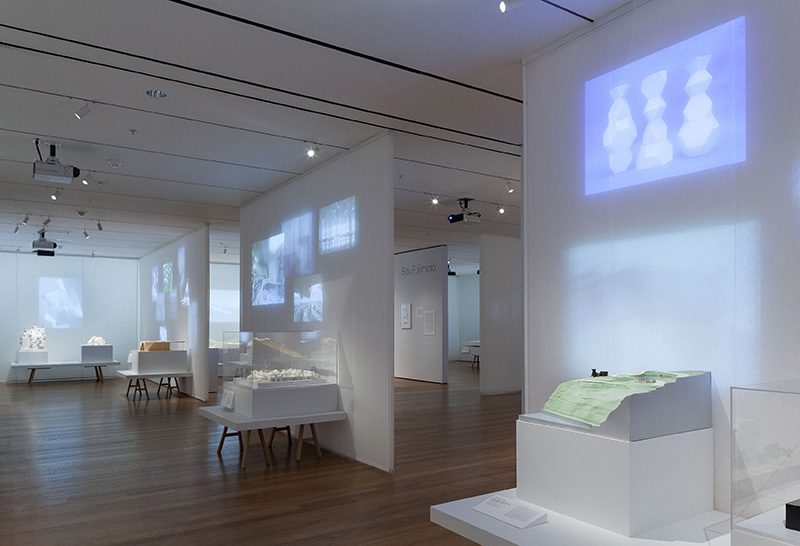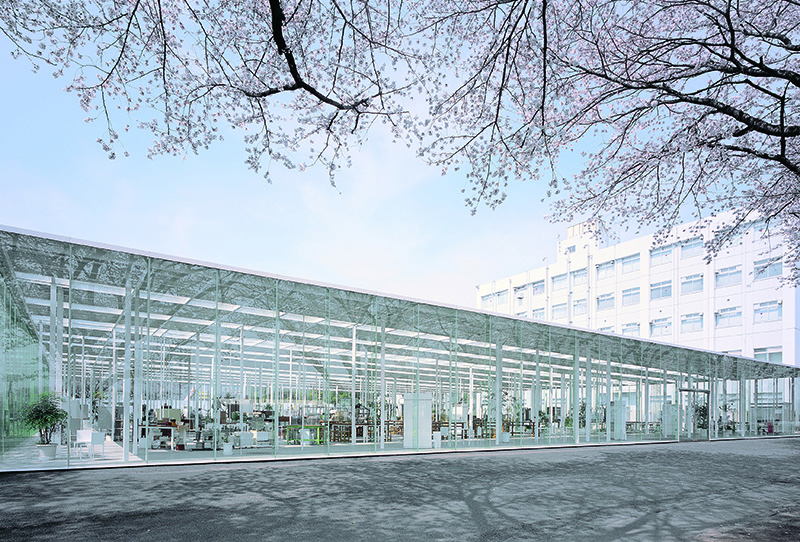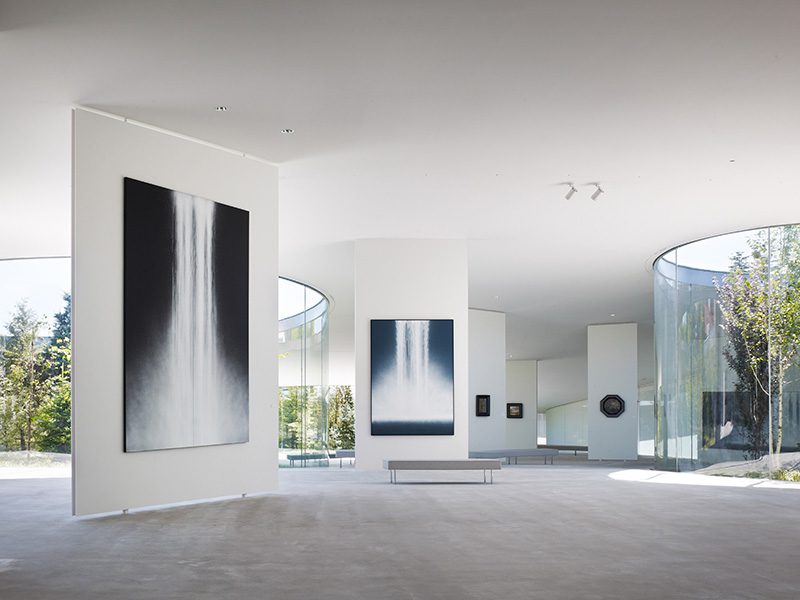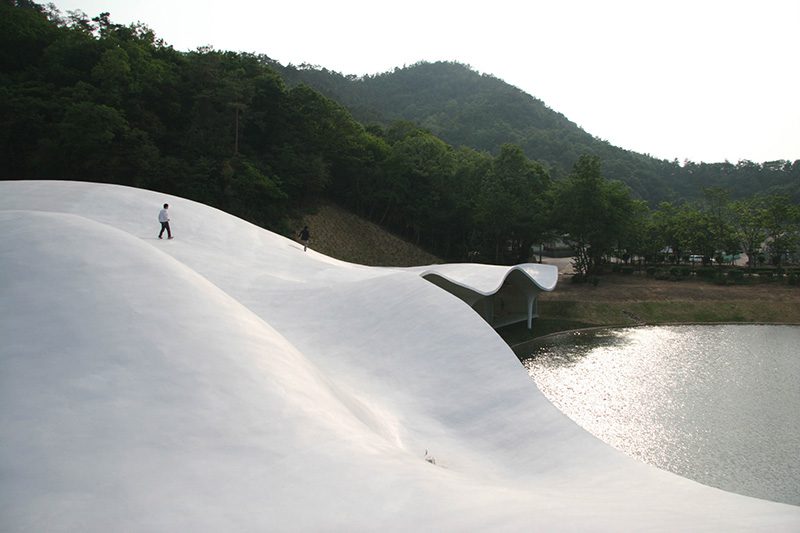ARCHITECTURE:MoMA -Japanese Constellation
 The exhibition “A Japanese Constellation: Toyo Ito, SANAA, and Beyond” focuses on the work of architects and designers orbiting Pritzker Prize winners. MoMA spotlights a small cluster of contemporary Japanese architects working within the larger field, exploring their formal inventiveness and close professional relationships to frame a radical model of practice in the 21st Century.
The exhibition “A Japanese Constellation: Toyo Ito, SANAA, and Beyond” focuses on the work of architects and designers orbiting Pritzker Prize winners. MoMA spotlights a small cluster of contemporary Japanese architects working within the larger field, exploring their formal inventiveness and close professional relationships to frame a radical model of practice in the 21st Century.
By Dimitris Lempesis
Photo: MoMA Archive
The exhibition “A Japanese Constellation: Toyo Ito, SANAA, and Beyond”, with 44 projects represent a diverse range of work, from small domestic projects to museums. Presented in models, drawings, and projected slideshows, the work highlights the architects’ significant structural innovations and use of transparent and lightweight materials, while foregrounding their commitments to the social lives of their buildings. The exhibition is a retrospective of recent works by three generations of internationally acclaimed Architects: Toyo Ito, Kazuyo Sejima, Ryue Nishizawa, Sou Fujimoto, Akihisa Hirata, and Junya Ishigami. Offering a panorama of established and up-and-coming architects, the exhibition reveals how shared architectural themes travel across generations of architects, creating a strong identity for a regional practice with global impact. The exhibition is separated into 6 intersecting spaces, but begins with a display of models, drawings, and digital films by the six architects in a space adjacent to the exhibition’s entrance. The opening section of the exhibition is devoted to the work of Toyo Ito, he approaches architecture conceptually, in search of a fluid language capable of interpreting the complexities of contemporary life and overcoming what he sees as the limitations of 20th-century modernism. The following section is devoted to Kazuyo Sejima, an architect who creates designs attentive to the physical experiences of architecture, both as a relationship to time and to the proportions of the human body. As a young architect in the early 1980s, she spent several formative years in Ito’s office during a period marked by Tokyo’s transformation through consumer culture and the technological products of the information age. SANAA, the collaborative Sejima and Nishizawa and Associates, operates in parallel to Sejima and Nishizawa’s individual practices. The three studios share one large workspace allowing feedback and communication across projects. Focusing on larger cultural and international projects, SANAA works from simple, almost diagrammatic forms, using industrial materials like steel and glass in a language familiar to modern architecture. From these minimal components they generate an experientially complex, intentionally open-ended architecture. Ryue Nishizawa worked in Sejima’s office as a post-graduate student for several years before the pair formalized their collaboration as SANAA and he established his own practice in 1997. In Nishizawa’s independent work, a recurring line of inquiry is the way in which architecture encounters its surroundings, whether the heterogeneous, unplanned urban fabric of the city or the uneven terrain of the landscape. Exploring indeterminate conceptions of space, Sou Fujimoto seeks to create structures that transform everyday routines and influence the social interactions between people. His conceptual inspiration is drawn from archetypal natural forms such as trees, caves, gardens, and clouds. Using mathematical algorithms and geometric patterns to mirror the organic complexity of the natural world, Akihisa Hirata’s designs often start from observations of phenomena such as bubbles or smoke. He seeks to create what he describes as an “ecological” architecture. Junya Ishigami explores the physical limits of architecture in pursuit of novel perceptual experiences. His early work featured a series of installations that drew on artistic practices to test the material limits of what can constitute architecture. In Balloon (2007–08), a five-story metallic inflatable is designed to float effortlessly, appearing to defy gravity. The exhibition concludes with the Home-for-All initiative. In March 2011, the Great East Japan Earthquake struck the northeastern Tohoku region of Japan’s main island, Honshu. In the wake of the disaster, a group of 5 Japanese architects, led by Toyo Ito and including Kazuyo Sejima, proposed Home-for-All, an initiative to provide simple communal structures for meetings and social events in areas of temporary housing.
Info: Curators: Pedro Gadanho & Phoebe Springstubb, The Museum of Modern Art, 11 West 53rd Street, New York, Duration: 13/3-4/7/16, Days & Hours: Mon-Thu & Sat-Sun 10:30-17:30, Fri 10:30-20:00, www.moma.org












